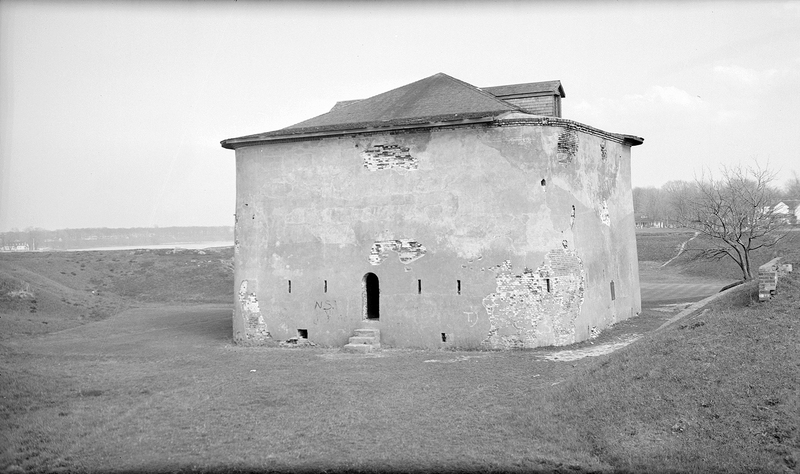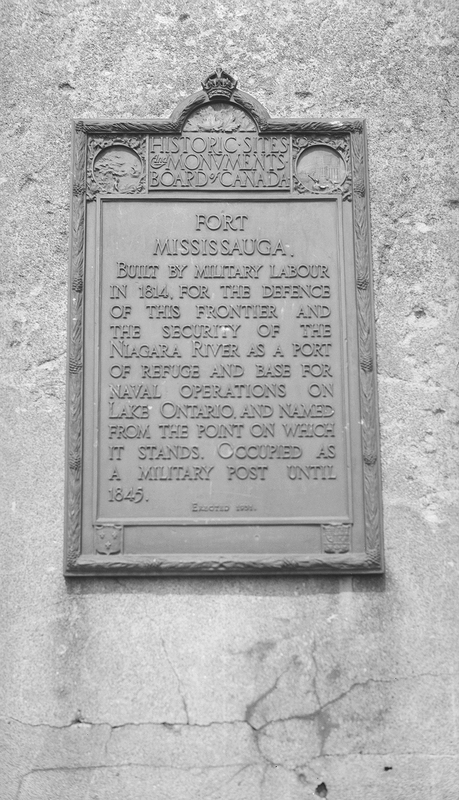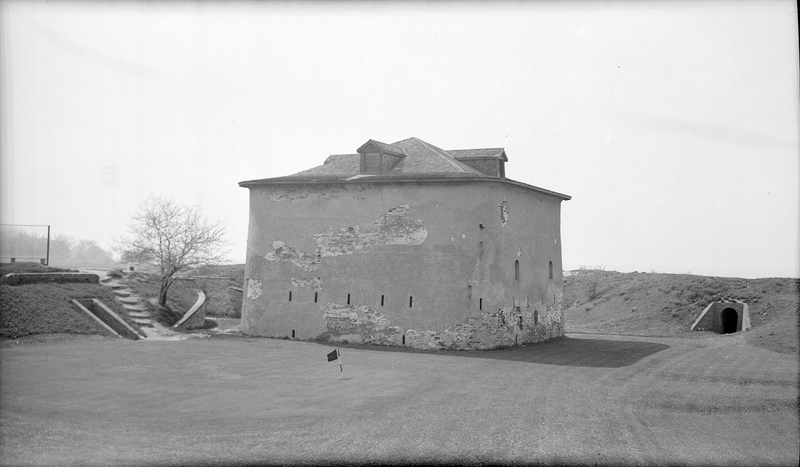Fort Mississauga
Construction on Fort Mississauga began in the spring of 1814. Since its construction began so late in the war, it was not actively used during the hostilities. But the strategic importance of the site was recognized by the British after the Americans invaded and occupied Niagara-on-the-Lake in May 1813. The fort was built on Mississauga Point in Niagara-on-the-Lake, at the mouth of the Niagara River. It contained a tower and an irregular, star-shaped field-work. In 1816, plans were made to have the rudimentary fort replaced by a massive fortress, but this project was never undertaken.
In March of 1814, a letter written by Lieut. Col. Bruyeres regarding the defence of the Niagara frontier makes reference to progress on Fort Mississauga and the urgency of the situation. The British were expecting an American offensive attack and were anxious to avoid a defeat and occupation similar to what had occurred when the Americans attacked in May of 1813. Bruyeres wrote that "Mississauga Point must be Fortified and occupied with every possible dispatch--also the Works at Fort George and Mississauga Point to be established in conformity to the instructions left with you on the 29th January. These are essential positions to be immediately occupied with strong Batteries to act against the opposite shore."
After the war ended, a shortage of building materials and indecision by senior military officers hampered progress on the fort's construction. By 1825 it became apparent that the plans for Fort Mississauga would not be carried out. The buildings that had been constructed were dilapidated and falling apart. It was used sporadically between 1837 and the late 1860s to respond to border disputes, during the American Civil War, and in response to the Fenian threat. Sometime in the 1860s the fort was officially abandoned by the military and its deterioration accelerated. Some of the grounds were used as a golf course. During the First and Second World Wars it was used to train recruits and was known as Camp Niagara.
In 1931 a plaque was affixed to the southwest wall of the tower noting its historical significance. In 1960 Fort Mississauga was officially designated a historic site of national significance by the Historic Sites and Monuments Board of Canada. What remains of the tower is closed to the public, but the site is open and accessible.


